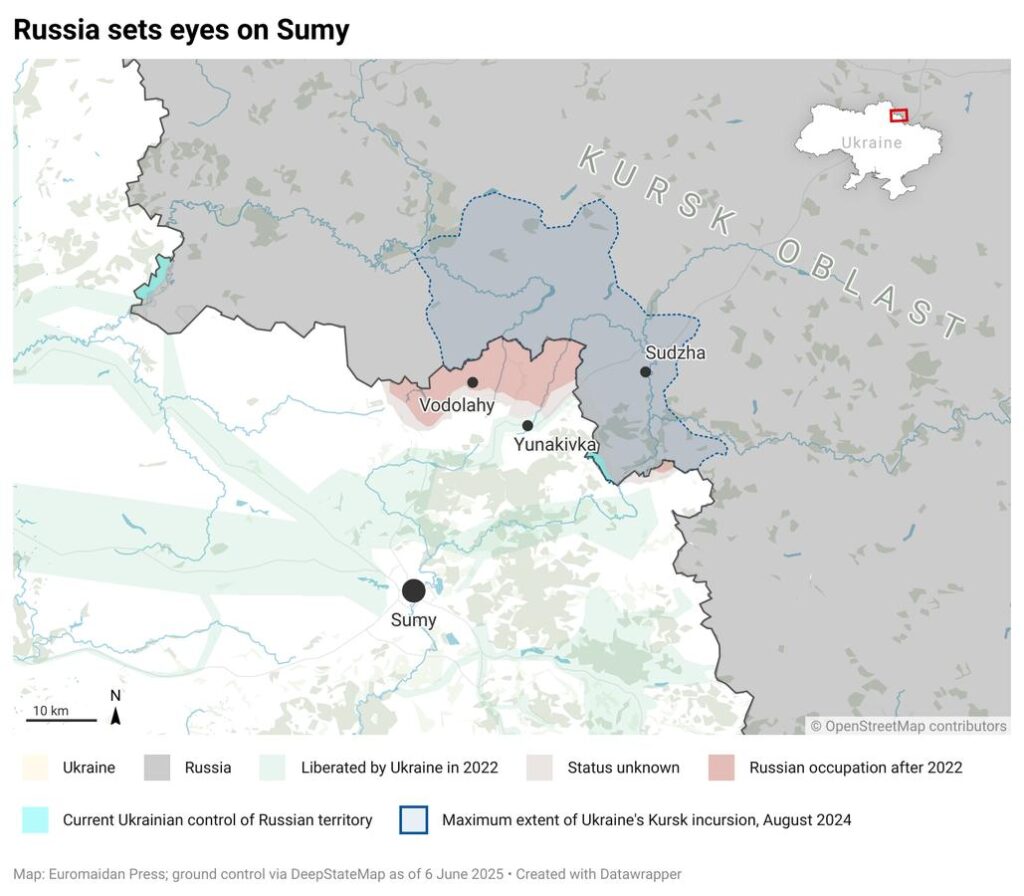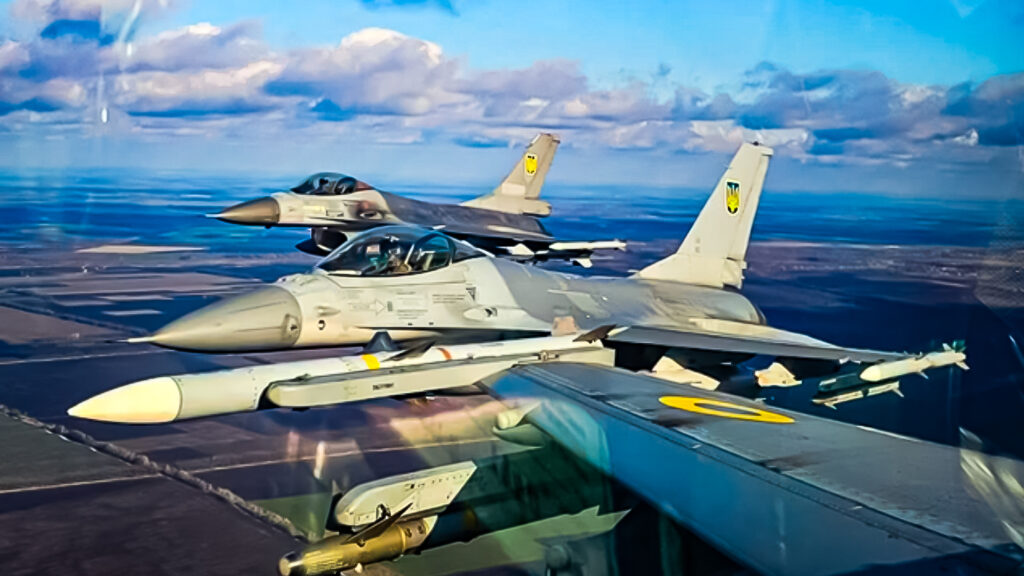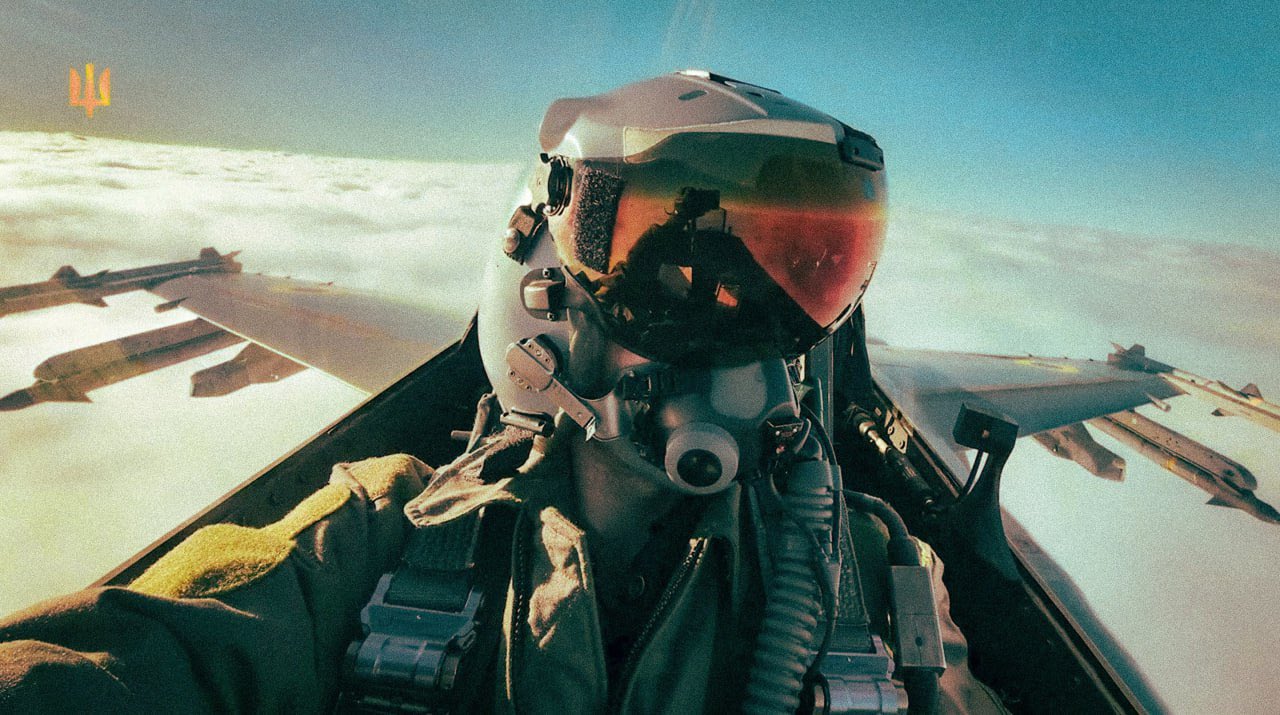Russian troops are piling onto motorcycles and all-terrain vehicles and attacking in small groups in Sumy Oblast in northern Ukraine. But the shift to smaller, lighter assault groups doesn’t mean the Russians are losing momentum in Sumy.
In fact, they may be preparing to march farther south—toward the city of Sumy itself.

50,000 troops, 20 kilometers to target
In late May, a powerful Russian force—50,000 troops plus hundreds of vehicles—rolled toward the border and into Sumy Oblast, reversing modest Ukrainian gains along the border region. Two weeks later, the Russians had captured several border villages in a 150-square-kilometer pocket.
Sumy lies just 20 kilometers to the south.
As the offensive grinds on, the Russians’ assault tactics have begun to shift.
“On the Sumy direction, Russian forces have changed tactics and conduct assaults in groups of eight to 10 personnel, use motorcycles and all-terrain vehicles (quad bikes) for rapid movement, secure positions and mass forces for further attacks,” the Ukrainian Center for Defense Strategies reported Thursday.
Trading armored vehicles for unarmored ones, and fighting in smaller groups, can make individual Russian troops more vulnerable to Ukrainian drones. But that’s all part of the plan, as analysts Jack Watling and Nick Reynolds at the Royal United Services Institute in London noted in a pair of reports from this year and last.

Costly reconnaissance by fire
According to Watling and Reynolds, small probes are just the first phase for major Russian assaults. “First, they send sections/squads of poorly trained troops, perhaps eight personnel at a time (although some larger attacks consist of up to 30 personnel supported by one or two infantry fighting vehicles),” Watling and Reynolds explained.
“These are ordered to advance towards where they assess Ukrainian positions to be, conducting reconnaissance by drawing fire,” the analysts added. “If the group encounters resistance, Russian commanders assess where they believe the best lines of approach are, and in particular, where the boundaries between defensive units lie.”
Next, Russian artillery and precision glide bombs rain down.
According to Ukrainian President Volodymyr Zelenskyy, the Russians are now dropping nearly 180 of the glide bombs every day all along the front line. That’s up from 100 as recently as last year.
“When rotation or disruption of the defense is achieved, Russian units aim to conduct more deliberate assault actions,” Watling and Reynolds wrote.
The small, vulnerable assaults are just the preludes to larger, more powerful attacks. This probe-then-attack approach to ground warfare, with light infantry doing the probing, can be costly in lives. It’s not for no reason that Russian casualties have exceeded 1,000 a day for the better part of a year.

Apocalypse comes to Kostiantynivka: every tenth Russian soldier marches on strategic town
Ukraine’s difficult math
But as long as recruitment remains robust, the Kremlin doesn’t seem to mind, Watling and Reynolds explained. “The Russian group of forces continues to take significant casualties, but is nevertheless growing in size.”
The pro-Ukrainian Conflict Intelligence Team initially described the Russian offensive in Sumy as “gradual.” But another analyst is worried it might accelerate as Ukraine shifts more forces to the south to block Russian advances around the eastern city of Pokrovsk.
“Ukraine shifted tens of thousands of troops” from Sumy, noted Tatarigami, the founder of Frontelligence Insight. That had the effect of “leaving that front undermanned and accelerating Russia’s gains there.”
The destruction of a few smaller Russian assault groups, most likely conducting reconnaissance missions, belies the overall superiority of the Russian force in the north—and the growing likelihood of further Russian advances.
“Unless the loss ratio begins to shift decisively in Ukraine’s favor, Russian forces are likely to continue advancing,” Tatarigami warned.
The Ukrainian air force has responded by sortieing more of its precious, ex-European Lockheed Martin F-16 fighters for bombing raids targeting the attacking Russians. But it might take more than a surge in air power to halt the Russian march on Sumy.





